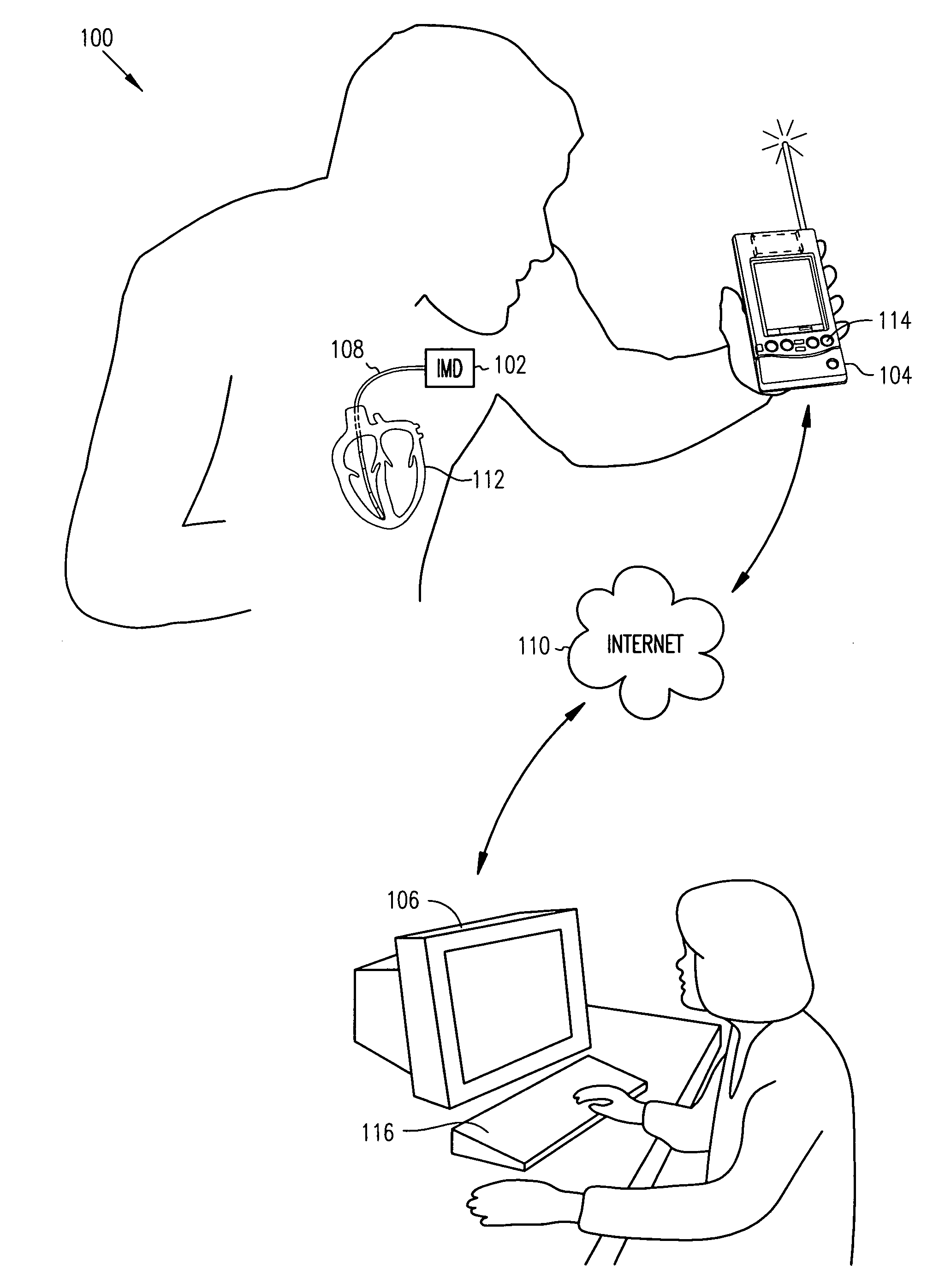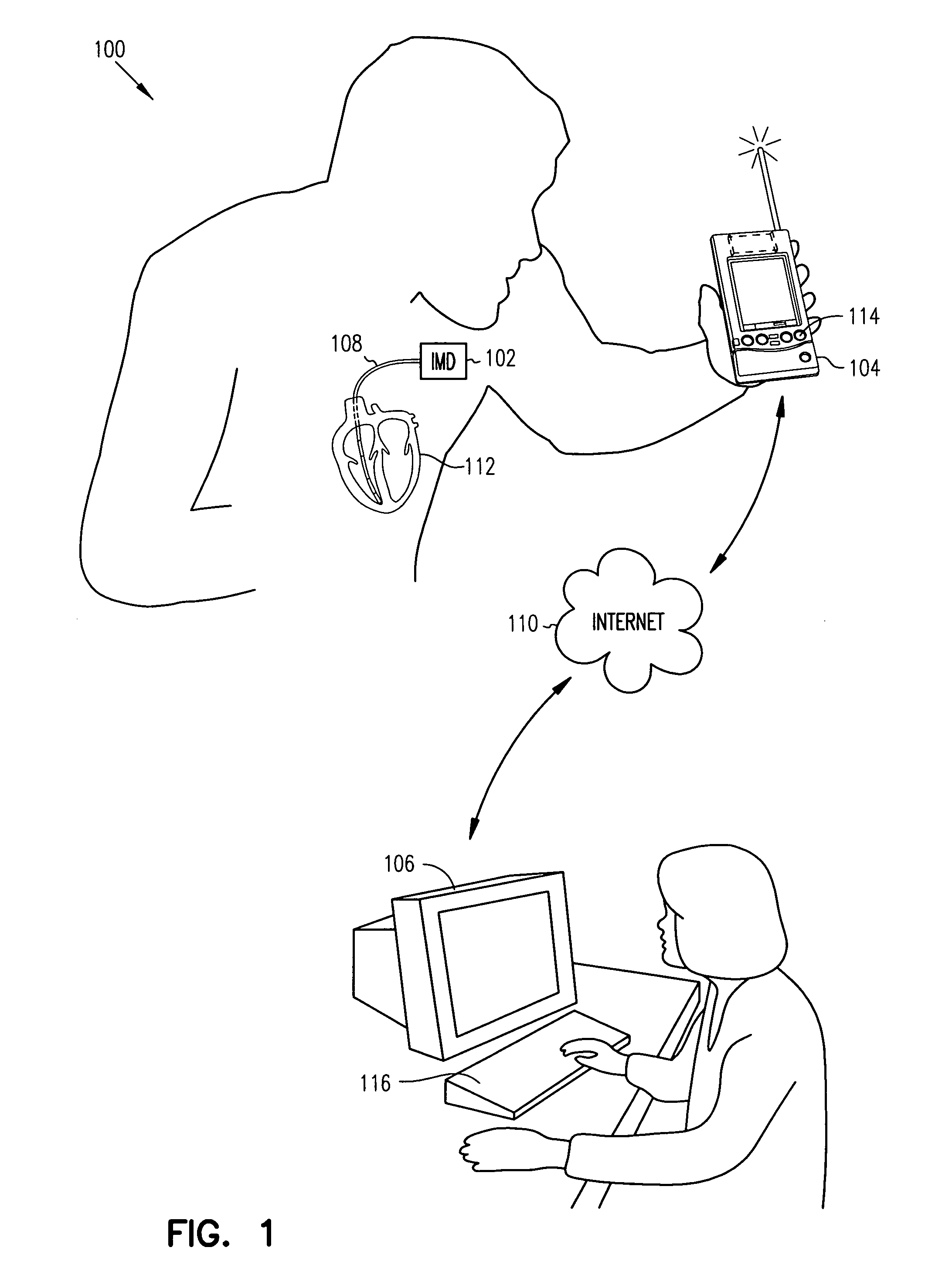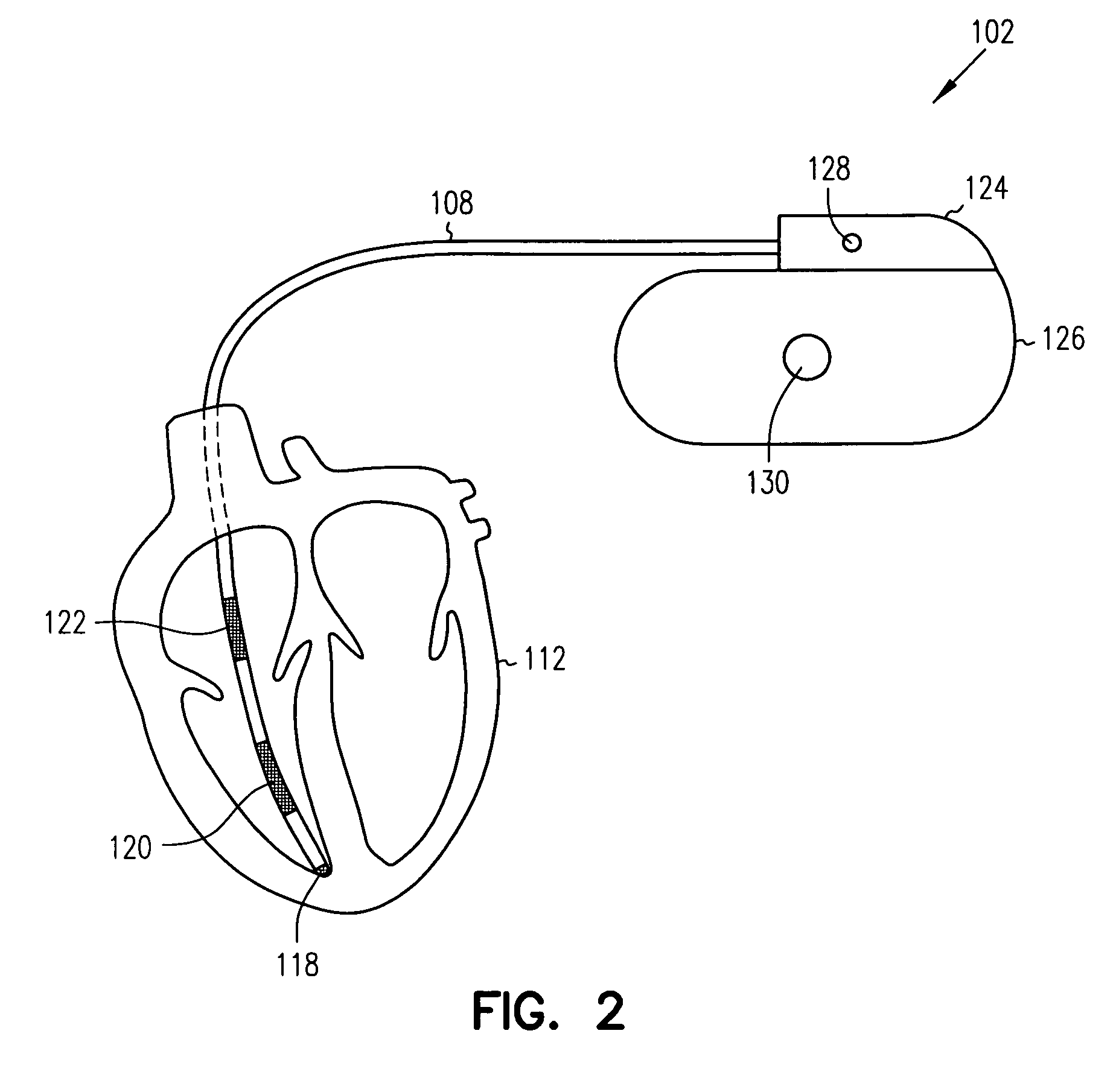Detection of pleural effusion using transthoracic impedance
a technology of transthoracic impedance and pleural effusion, which is applied in the field of thoracic fluid detection, can solve the problems of pulmonary edema, fluid build-up in the thorax of a person, and excessive fluid retention in the thorax
- Summary
- Abstract
- Description
- Claims
- Application Information
AI Technical Summary
Problems solved by technology
Method used
Image
Examples
examples
[0019]Detection of both pleural effusion and pulmonary edema may be made by monitoring an impedance of a subject's thoracic cavity. In each case, a reduction in thoracic impedance indicates the presence of an increase in thoracic fluid. Conversely, fluid depletion in the thorax corresponds to an increase in the thoracic impedance detected. In pleural effusion, a reduction in thoracic impedance indicates an increase in the amount of fluid between the pleural membranes outside the subject's lungs. In pulmonary edema, a reduction in thoracic impedance indicates an increase in the amount of fluid inside the subject's lungs. Since reduced thoracic impedance will occur with either of pleural effusion and pulmonary edema, differential detection of these conditions may be useful. One example of such usefulness arises from the fact that treatment requirements (e.g., therapy) may differ depending on whether pleural effusion or pulmonary edema or both are responsible for a reduction in thoraci...
PUM
 Login to View More
Login to View More Abstract
Description
Claims
Application Information
 Login to View More
Login to View More - R&D
- Intellectual Property
- Life Sciences
- Materials
- Tech Scout
- Unparalleled Data Quality
- Higher Quality Content
- 60% Fewer Hallucinations
Browse by: Latest US Patents, China's latest patents, Technical Efficacy Thesaurus, Application Domain, Technology Topic, Popular Technical Reports.
© 2025 PatSnap. All rights reserved.Legal|Privacy policy|Modern Slavery Act Transparency Statement|Sitemap|About US| Contact US: help@patsnap.com



